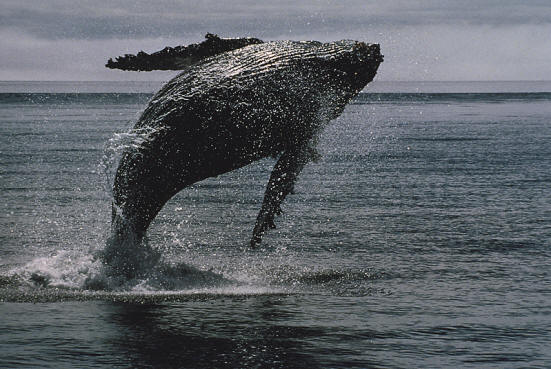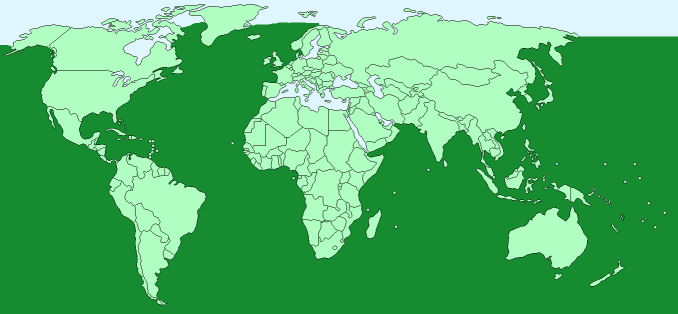Humpback Whale

Scientific Name – Megaptera novaeangliae
Classification – Cetaceans
Gender Names – Male – bull; Female – cow; baby – Calves
Collective Noun – Pod
Average Length – 14.6 – 19 metres (48 – 62.5 ft )
Average Weight – 36 tonnes (40 tons)
Speed – 16.8 mph
Life Expectancy – 45 – 50 years
Mating Season – winter months which are spent in warmer waters
Pregnancy -eleven months
Special Features – Humpback whales are migratory travelling vast distances between warmer waters where they spend the winters and cooler waters in the north and south where they spend summer months. Their blow is a double stream of spray that rises 10-13 feet (3.1-4 m) above the surface of the water
Family Unit – Humpbacks travel in large, loose groups. Most associations between humpbacks are temporary, lasting at most a few days. The exception is the strong and lasting bond between mother and calf
 Geographical Distribution – Oceans of the World
Geographical Distribution – Oceans of the World
World Population – 10,000-15,000
Conservation Status – Endangered
Natural Habitat – The ocean
Diet – krill, small crustaceans, plankton, and small fish
Predators – killer whales and humans
Harvard Reference for this page:
Heather Y Wheeler. (2015). Humpback Whale. Available: https://www.naturalhistoryonthenet.com/Mammals/humpback_whale.htm. Last accessed Monday, July 18, 2016
Mammals Pages
Features
Classification
Mammals A – Z
